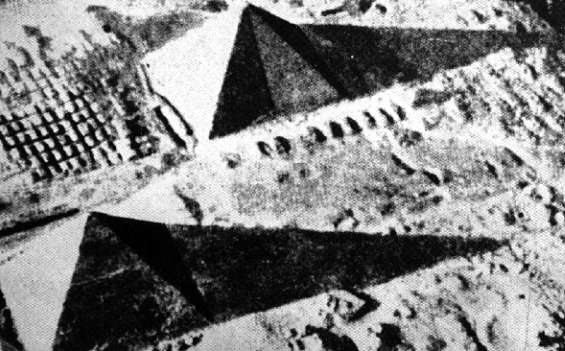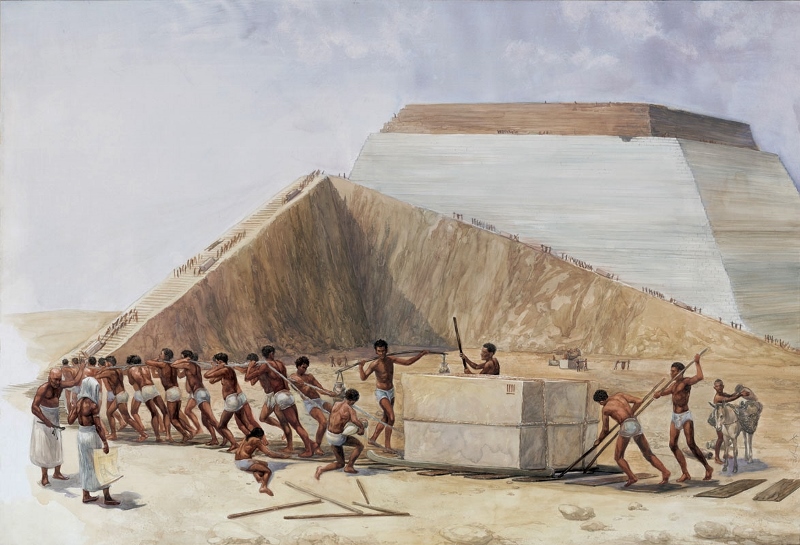
The incredible features of the Great Pyramid of Egypt
June 3rd, 2015
The monumental pyramid of Khufu is perhaps one of the buildings of antiquity that has aroused most curiosity among people. Its construction method is unsubstantiated ... Just how is it possible that the Egyptians were able to erect something so precise and technically difficult?
According to ancient texts the great pyramid was built by pharaoh Khufu, and was completed in just 20 years, but that is something that most researchers find very hard to believe. 20 years is just too little time to complete something so precise, so important and so great.
3 million stone blocks weighing up to 60 tons, were transported from different quarries that were kilometers away. We cannot forget that they did not have traced roads, and that the wheel had not yet been invented. Better yet, the ancient Egyptians cut stone blocks with such precision that even the most advanced saws that we have today would not be able to match the accuracy of ancient Egyptians. Many Egyptologists stress that there are marks that have been left on the surface of some of the blocks that raise interesting questions. It has been demonstrated by researchers that the pyramid builders used a material, 50 times stronger than diamond to cut and shape the giant stone monuments and sarcophagi seen across Egypt, but what kind of material is 50 times stronger than diamond? Today, researchers are unaware of a material of similar characteristics. Yet, these giant blocks of stone were so precisely cut and placed into position that we today, without modern technology are not able to reproduce that ancient Egyptians did thousands of years ago. So what kind of technology did the ancient Egyptian possess?

The ancient Egyptians flattened the surface of the Giza plateau in such a way that between the ground level separating a pyramid of the other, there is only one centimeter in error.
But here are more interesting details. In addition to the huge stone blocks, the Egyptian pyramids were covered by 27,000 tiles of blocks polished to perfection. These tiles were placed one by one on the surface of the monumental construction. These huge pieces of rock had a weight of around 16 tons each. Now the question is, how did the ancient Egyptians of the fourth dynasty move so much weight? It would be interesting to mention that today, in a construction process where you need the transport huge blocks of stone, giant machines are used which are able to move only certain blocks of stone due to their weight. This only demonstrates that the original pyramid builders had access to advanced technology that helped them achieve such incredible feats of engineering, design and architecture.

There is another feature that makes the Great Pyramid something even more spectacular. The faces are not smooth, but they form two vertical planes which make up an angle of 27 minutes. Therefore, the great pyramid of Egypt does not have four sides but eight. With all of these characteristics, the ancient builders of the Pyramids of Egypt wanted to point out the equinoxes and solstices.
The interior of the pyramid is as incredible as the outside. Inside the Pyramid, the air is very dense, and if you enter the great pyramid with a flashlight or cameras to record the inside, you would be surprised to find out that the batteries run out very quickly. All of these incredible aspects make us reconsider whether the ancient Egyptians were actually capable to erect such monuments. Did they have the necessary knowledge and technology to calculate and construct these amazing monuments or are we missing something?

Whoever built these incredible structures deserves all the credit and respect, since these incredible monuments have been able to withstand the test of time.
Thanks to: http://www.ewao.com






 Sat Mar 23, 2024 11:33 pm by globalturbo
Sat Mar 23, 2024 11:33 pm by globalturbo

